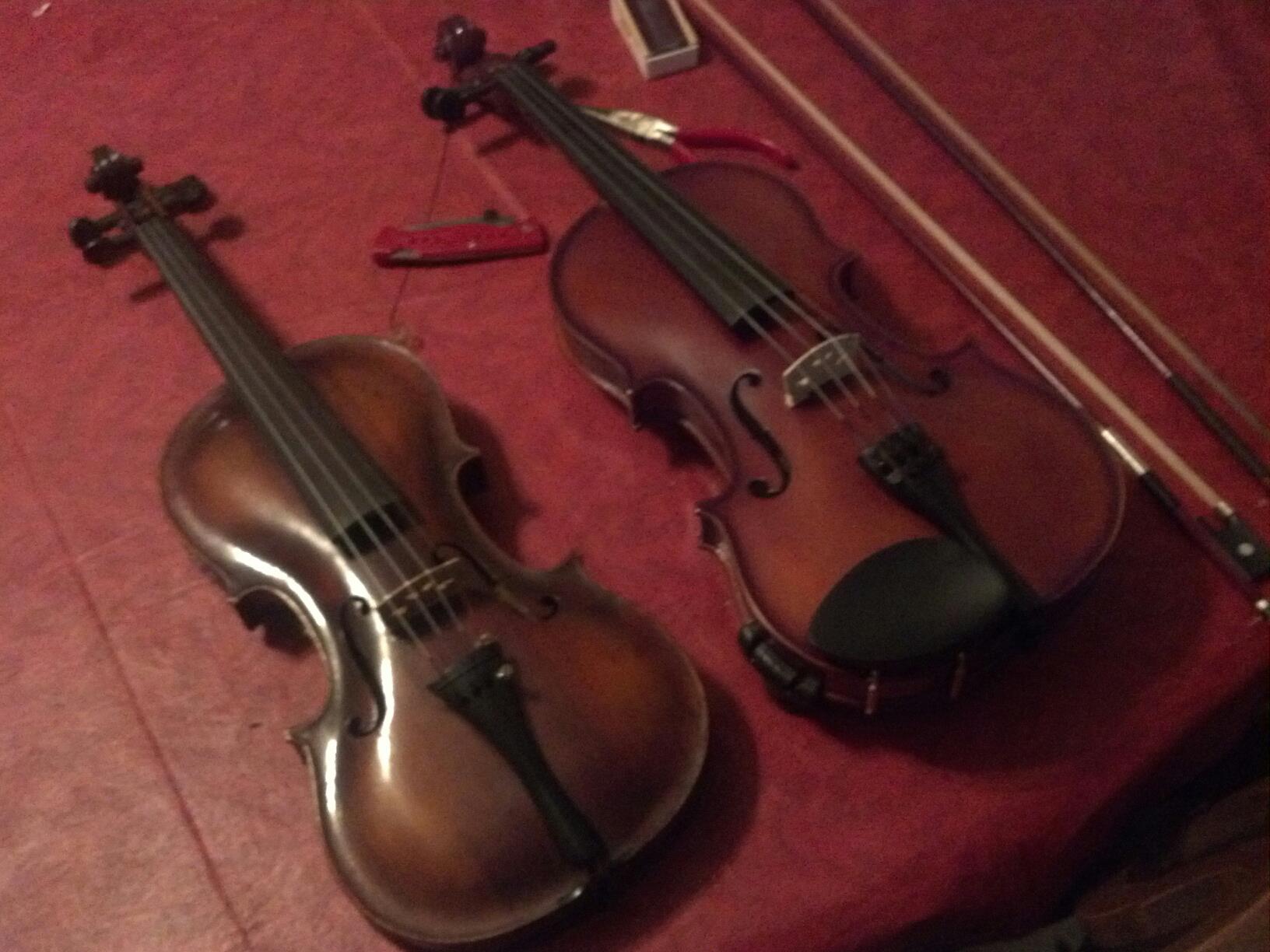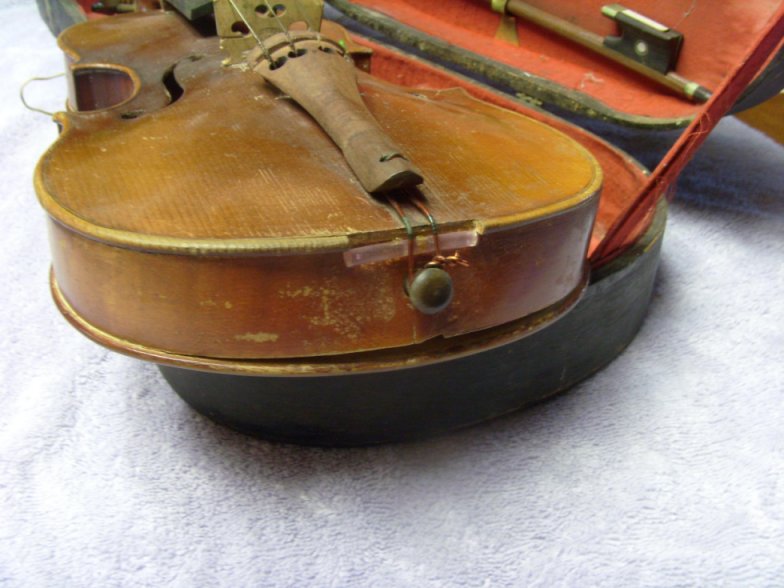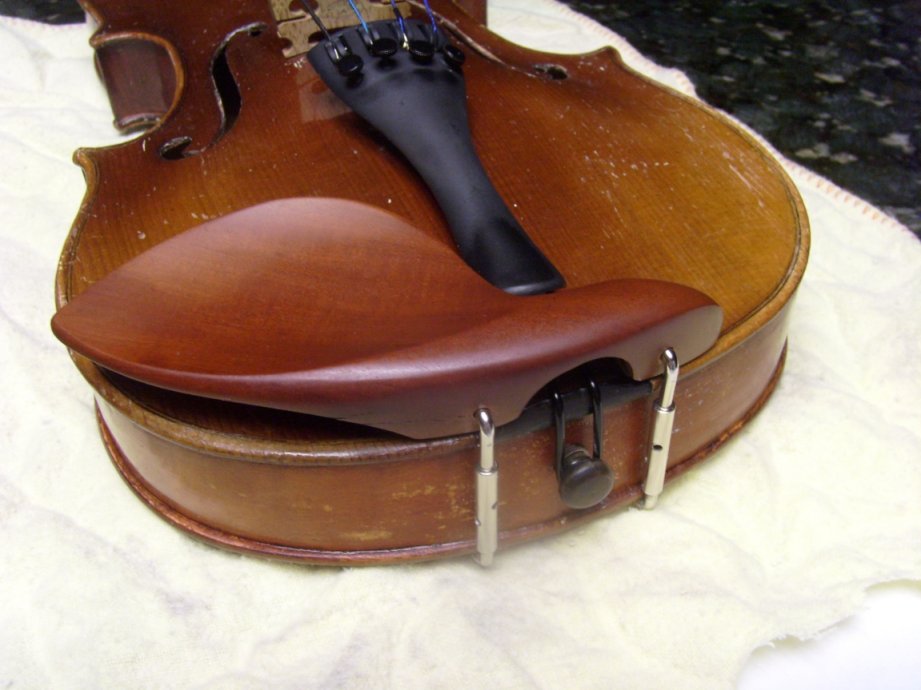Welcome to our forum. A Message To Our New and Prospective Members . Check out our Forum Rules. Lets keep this forum an enjoyable place to visit.
Currently working on errors from the latest (SimplePress) forum update. Many issues have been resoled and others are being worked on. Thank you for your patience.
 Topic RSS
Topic RSS



 (0 votes)
(0 votes) Regulars




Pro advisor
Regulars
Pro advisor
Regulars
Pro advisor
Regulars
Regulars



These are my 2! The one on the right is my primary player which is a Palatino VN-450. Yes, a cheapo, but it gets the job done for now! ![]()
The one on the left is a 1920's German Stainer Copy. She was a rescue! A friend of mine was cleaning out an old house in Chicago and came across this in a garbage pile! She showed me and I determined it needed a good home! I just need to have the sound post checked out as it is not as loud as my Palatino, but still sounds so sweet!
“Tell me and I forget. Teach me and I remember. Involve me and I learn.” ~Benjamin Franklin

I really like the looks and style of the old German fiddle.
That would be my choice and the one I would be concentrating on. I bet it produces a soft mellow tone. The bridge (from the photo) appears to be not quite as thick as the "cheapo". From what I can tell in the photo, the bridge is setting forward a bit from the notches in the F holes, or is it just deception. But that measurement is not completely set in stone, it's what is usually normal, it could be somewhat off.
If you plan on playing both instrument's, my advice is to check all your measurement's making sure your total length of the violin's are the same, the body measure's the same and the measurement from the nut to the bridge is the same. If you set it up using the notche's in the F hole for your guide, you may be off, meaning the distance from the nut to the bridge must be exactly the same on both violins, otherwise when you play one, put it down and play the other, the note' won't be the same. I did this with my cheapo violin to match my 130 yr old fiddle. The two violin's match in critical measurement's, but that set the bridge back behind the notches in the F holes. Due to the fact that the cheapo is almost 1/2" longer than the other. I consequently had to move the sound post back behind the bridge, now when I play them I get the same note's, but the cheapo now sound's like a tin can. I no longer play the cheapo, I think i'll use it for parts. I already took the chin rest off and built it up higher and put it on the old fiddle.
![]()
Regulars



Thanks for the info! I didn't even think to check the measurements in relation to note placement!
Surprisingly, the bridge on the Stainer is thicker than the one on the Palatino! That and it is flatter. I think the prior owner had it set up for playing easier chords! The picture is a little deceiving. The Palatino has the shoulder rest still attached and I did take the pic from a weird angle! lol
Once I had strings on it and had it set up, it did have a very mellow/sweet sound to it. I want to get the rest of it checked out before I start playing it heavily. It does have a small chip on it near the bridge which concerns me. Everything else seems to be solid on it.
I actually rescued 2 violins, the other one didn't quite make it! I think that one will be my parts violin! lol It was another early 1900's German Strad Copy. But the wood was separating on the back. It looks like the sound box had a blow out! Which is a shame because the wood work on the scroll was amazing!
The casualty strad copy:
“Tell me and I forget. Teach me and I remember. Involve me and I learn.” ~Benjamin Franklin

Regulars




I'm not sure if I would part it out just yet, I believe I would consult a reputable luthier for his opinion. The top of it may and probably will have to be removed, but I don't think you could buy another of that quality for the cost of repairs to this one.
There is some really nice / intricate hand carvings on the scroll and the belly of the violin. It has a really nice finish and love the color, I'm sure there have been fiddle's in worse condition than this one that have been repaired.
![]()
Regulars
 Offline
Offline

Mine was probably one of 'em. ![]()
I agree with Fiddlestix though. If you can afford to have a luthier check it and give you an idea as to whether or not it would be salvagable that would be a good first move. It's better than dismantling it and then finding out that you might have been able to restore it instead.
Regulars
 Offline
Offline
Regulars
 Offline
Offline

Regulars
 Offline
Offline

Sone said
Looks like a Stainer!
That's an interesting observation. I just did some research and Stainer copies were quite common during the time period that my great-great-grandfather built the old girl. It's very possible that he used one as a model. Since the Stainer is no longer as popular a design as it was it would also explain why the majority of people who see the lady think she looks a little off.
Tangent:
Also, I was chatting with a luthier last month and she said the fiddle's top plates were each tuned differently. Any of our builders here know what's up with that?
Regulars



NICE!!! I love seeing the striping in the wood! My Stainer copy has that same style! From what I've researched, Stainer's were notorious for having a "bloated" look! ....that and intricately carved scrolls such as Lion's heads!
I can see a little of that "bloating" on yours!
I'll have to post a few better pics of my Stainer copy as well as the damage from the Strad copy for cdennyb! The damage isn't nearly as bad as the one cdennyb posted! There may be some hope yet! ![]()
“Tell me and I forget. Teach me and I remember. Involve me and I learn.” ~Benjamin Franklin

1 Guest(s)


 Log In
Log In Register
Register
































